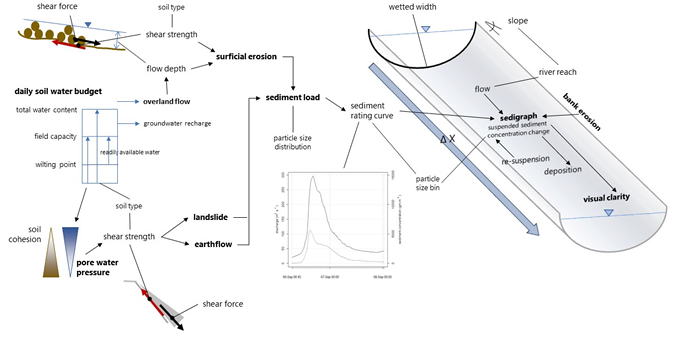- Home
- ...
- Smarter Targeting of Erosion Control (STEC)
- Smarter Targeting of Erosion Control (STEC) News
Test - Temporal Erosion and Sediment Transport Model
To reduce the amount of sediment being delivered to streams and their downstream receiving environments, catchment-wide approaches for reducing soil erosion are required. In recent decades catchment rehabilitation measures, such as land-use change, riparian management, and erosion control planting, have been used to reduce suspended sediment contributions to downstream environments. These measures are costly to implement across whole catchments, so they need to be targeted to achieve cost-effectiveness.
We are developing a ‘Temporal Erosion and Sediment Transport’ (TEST) model so that the effects of soil erosion on water quality, such as visual clarity can be predicted. TEST will characterise where and when soil erosion occurs, what type of sediment is produced, and how that sediment moves through catchments. It will be able to predict the visual clarity of rivers on an hourly basis for all streams and rivers in a modelled catchment. High temporal resolution is required for TEST to link with other sediment models of estuaries and coastal environments. High spatial resolution is required for regional councils to prioritise where to apply cost-effective erosion control to meet national and regional water quality objectives.
The figure shows the processes involved in TEST. Landslides and earthflows erode soil through excessive pore water pressure. Gullies and surficial processes erode soil through overland flow of water. Sediment is delivered to streams and transported downstream, and eventually deposited it on river beds, in lakes, or in estuaries, depending on the particle size of the sediment. The output of TEST is the water and sediment discharge (for different particle sizes) as a function of time in all stream links in a catchment.

Figure. Landslides, earthflows, gullies, and surficial processes erode soil and deliver it to streams, which move it downstream to river beds, lakes or estuaries, depending on particle size.
Contact
